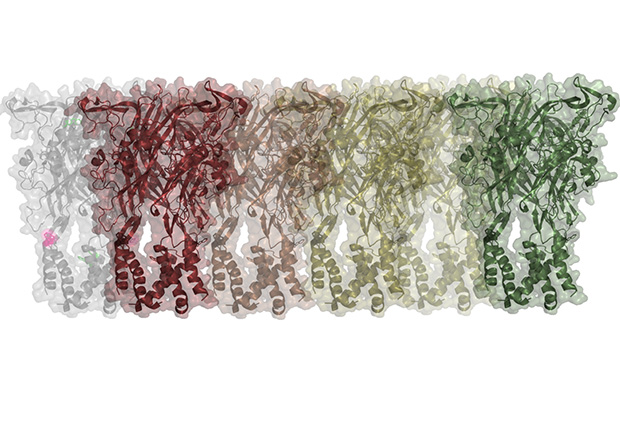
First results from CSSB
EMBL scientists collaborate to develop new protocol for screening membrane protein stability

Six research groups, among them two from EMBL Hamburg, have developed a protocol that will simplify the process of solubilising integral membrane proteins (IMPs), as they report on 17 July in Scientific Reports. This is also the first publication resulting from a collaboration at the Centre for Structural Systems Biology(CSSB) in Hamburg.
“Working with membrane proteins is challenging,” says corresponding author and EMBL group leader María García Alai. “While they’re in the membrane, they’re not soluble. So you have to get them out, which is the most difficult part. When you do that, you might be altering the structure of the proteins, so you never know exactly what is happening.”
The first step of working with IMPs is to extract them from the membrane using detergents. This can alter the protein, which then has to be purified and reintegrated into a membrane-like environment. Experimenting with different detergents to get the best result is expensive, because the detergent has to be removed in various technical steps. García’s team and their collaborators showed that it’s possible to measure the stability and solubility of IMPs by diluting them into different detergents. The result was a protocol that allows the identification of suitable conditions for membrane proteins during purification. “This will be very useful for all the laboratories working with membrane proteins. We show a lot of evidence that this pipeline is the way to go,” says García.
The development of the protocol is the first result of a collaboration between various research groups using the Protein Characterisation facility at CSSB. Inaugurated in 2017, CSSB is a cooperation involving nine research partners from Northern Germany, including three universities and six research institutes. CSSB aims to become a leading international research centre studying the structure and function of pathogens. The first two facilities running at the site are the High-Throughput Crystallisation facility and the Protein Characterisation facility, both provided by EMBL.
“One of the most important things about the CSSB concept is that we’re not only doing research, but also contributing with facilities for the scientific community,” says García Alai. “All the different scientific institutions that are part of CSSB work together and push forward the infrastructure, facilities and scientific services. And this is the first result.”
The groups working on the project include the García Alai team and the Löw group, both at EMBL Hamburg, and their collaborators. The paper will be included in a special collection issued by Scientific Reports called ‘Structure and mechanism of membrane transporters’.


